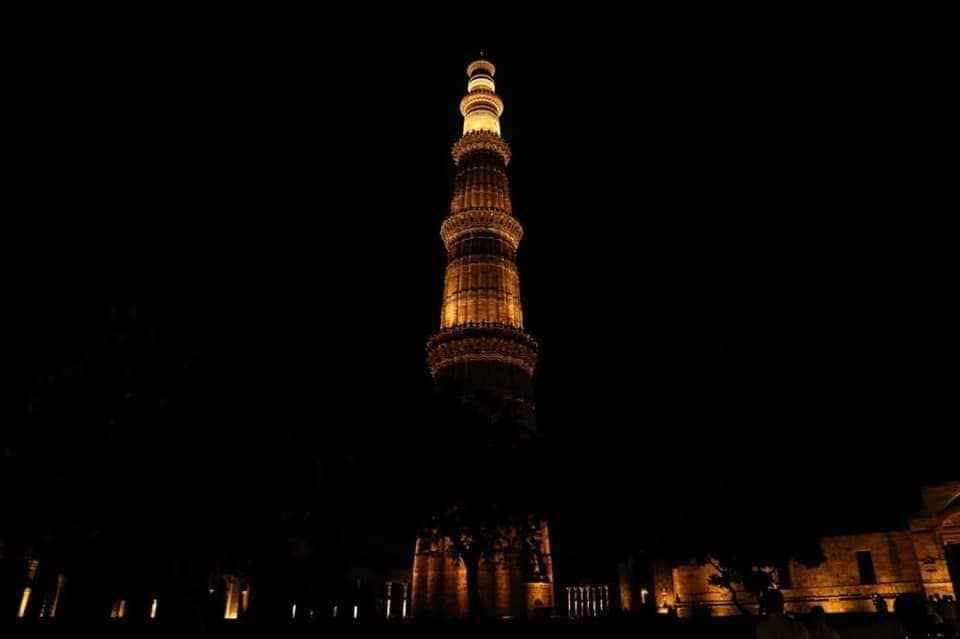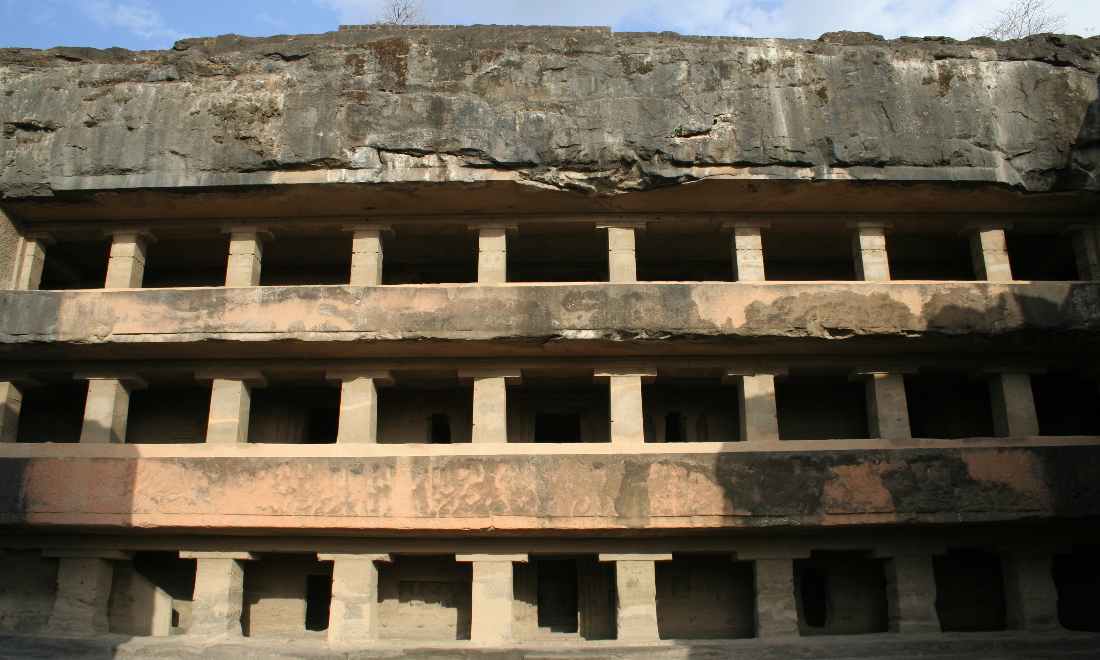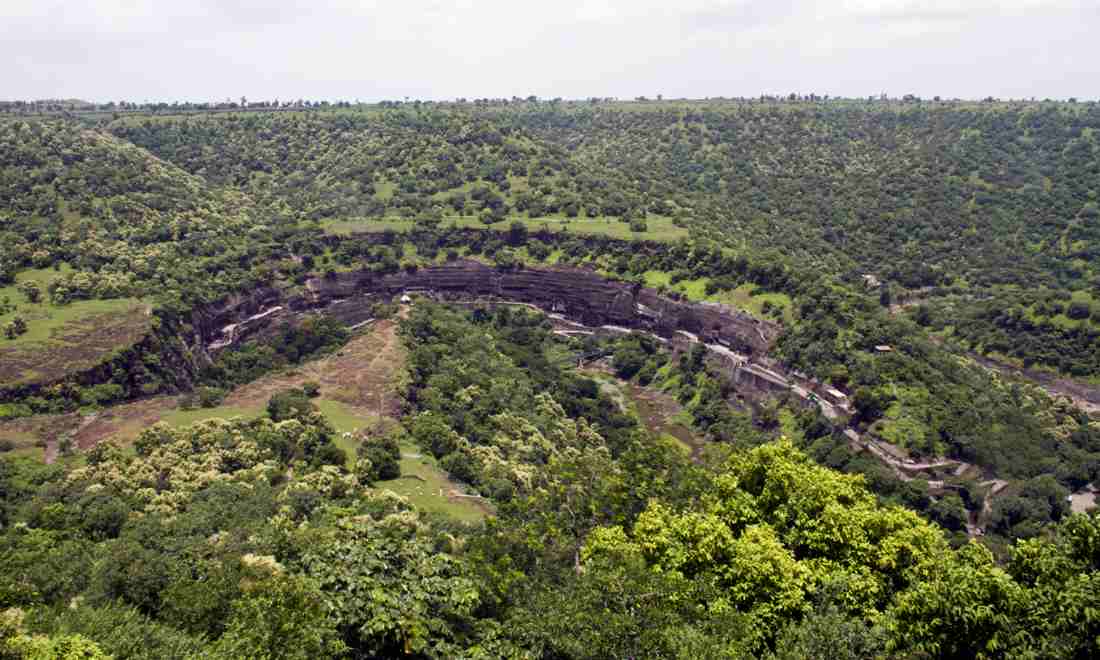Monuments of India: India has a long and vast cultural heritage. The country is the land of monuments of historical and cultural significance. Did you know that there are 38 World Heritage Properties in India out of which 30 are Cultural Properties, 7 are Natural Properties? Let's take a tour of the top five historical monuments of India.
What are Monuments?
The Archaeological Survey of India (ASI) has said ‘Monuments are remains of our prestigious past, representing culture, art architecture and structural technology of bygone days. Gamut of monuments includes Prehistoric sites, stone age rock-shelters, Neolithic sites, Megalithic burial sites, rock-cut caves, stupas, temples, churches, synagogues, mosques, tombs, palaces, forts, bathing ghats, tanks, water reservoirs, bridges, pillars, inscriptions, mounds, kos minars, excavated sites, etc.’
ASI defines ancient monuments as, ‘’Ancient Monument means any structure, erection or monument, or any tumulus or place of interment, or any cave, rock-sculpture, inscription or monolith which is of historical, archaeological or artistic interest and which has been in existence for not less than 100 years.’’
Also Read: List of National Parks in India
What are Historical Monuments?
Historical monuments are those structures that have significant cultural or architectural value. They are protected due to their cultural or historical significance for a particular region, nation, or civilization.
Top 5 Monuments of India
Taj Mahal
The Taj Mahal, a masterpiece of Indo-Islamic architecture, is located in Agra, Uttar Pradesh. As per ASI, It was built by the Mughal emperor Shah Jahan (reigned 1628-58 A.D.) as a garden tomb for his most favorite queen Mumtaz Mahal following her death in 1631 A.D.
 (1).jpg)
Interesting facts about Taj Mahal (Courtesy ASI)
- The work of construction of this great monument started from the very foundation in the fifth regnant year December 1631/January 1632 under the superintendence of Makramat Khan and Mir Abdul-Karim. The entire project was carried out in twelve years at a total cost of Rs. 50 lakhs.
- The principal materials used in the core of the tomb proper, its minarets and other accessory buildings are essentially brick (Lakhauri) and lime mortar. The external surface of the tomb building including its dome, drum, minarets, and interior of cenotaph chamber is lined with white marble veneering whereas all the other interior of all the other accessory buildings such as mosque, quest house, gates, etc. had been veneered with red sandstone except the exterior surfaces of domes.
- These precious and semi-precious stones were imported from different parts of the world were as white marble and red sandstone came from the quarries of Makrana, in District Nagaur of Rajasthan and Fatehpur Sikri in District of Agra of Uttar Pradesh respectively.
- Due to its outstanding universal value, it has been inscribed in the UNESCO World Heritage list in 1983.
Humayun’s Tomb
Humayun's Tomb is located in Delhi and is considered to be the first mature example of Mughal architecture. It was constructed during the reign of Mughal ruler Akbar (1556 -1605).
 (1).jpg)
Interesting facts about Humayun’s Tomb (Courtesy ASI)
- Humayun's Tomb, the first example of fully developed garden tomb (Charbagh style) in Indian subcontinent, is set in the middle of a geometrically arranged garden divided in four equal parts by the walkway and water channels and is surrounded by a rubble wall except the eastern side.
- It has two massive gateways in western and southern sides. Now the entrance is from the western gate but originally the southern gate was in use.
Qutub Minar
Qutub Minar, the tallest stone tower in India, is situated in the capital city of the country. The monument was conceived by Qutb ud-Din-Aibak (1192-1210 C.E.)
Also Read: List of top 10 Monuments in India
 (1).jpg Already Exist)

Interesting facts about Qutub Minar (Courtesy ASI)
- Qutb ud-Din completed the first storey while the second, third and fourth were completed by his successor Iltutmish (1211-36 C.E.).
- However, when it was damaged by lightning in 1326 C.E., the fourth storey was dismantled and reconstructed with an additional storey, making it a five-storied structure by Firoz shah Tughluq (1325-88) C.E.).
- With a height of 72.5m (238 ft.) and 379 steps, although it is the highest stone tower in India.
- In the courtyard of the Quwwat uI-Islam Mosque, stands the well known Iron Pillar of Ashoka which bears a Sanskrit inscription in Gupta Brahmi script, paleographical assignable to the fourth century.
- The inscription records that the pillar was set up as a dhvaja of god Vishnu on the hill known as Vishnupada, in the memory of a mighty king named Chandra, who is identified with Chandragupta II (375-413 C.E.) of the imperial Gupta Dynasty.
Ellora Caves
The well-renowned Ellora Caves are situated in Aurangabad, Maharashtra. They are located on the western face of the ridge of the Ellora range.

Interesting facts about Ellora Caves (Courtesy ASI)
- The caves are hewn out of the basaltic rock of the Deccan trap. The caves are datable from 6th century CE to 11th century CE In total, there are more than 100 caves in the Ellora hill range out of which 34 caves are mostly visited by the tourists.
- Most of the caves face west, while the Jain group of caves faces to south. Out of the 34 caves, caves 1 to 12 are Buddhist, caves 13 to 29 are Brahminical and caves 30 to 34 are Jain.
- The cave 5 is the largest and noteworthy among the early group of caves at Ellora. Among the second group (cave 6 to 12), the Teen Taal is the biggest and elaborate and cave 10 which is chaityagriha also known as Vishwakarma Cave or Sutara chi zopadi (carpenter’s hut) are most important and noteworthy. It houses a huge seated Buddha image in dharmachakrapravartan mudra carved over facing of the stupa.
- Ellora’s spectacular architectural and sculptural exuberance and its religious harmony is listed as World Heritage Monument by the UNESCO in 1983.
Ajanta Caves
The famous Ajanta Caves are considered to be the finest surviving examples of Indian art and are located in Aurangabad, Maharashtra.

Interesting facts about Ajanta Caves (Courtesy ASI)
- These caves were excavated in horse-shoe shaped bend of rock scarp nearly 76 m in height overlooking a narrow stream known as Waghora. In all 30 caves were hewn out of the living rock in different periods according to the necessity.
- Out of these, five (cave 9, 10, 19, 26 and 29) are chaityagrihas and the rest are viharas.
- Out of the 30 caves 6 caves belong to the earliest phase of Buddhism i.e. Hinayana. Caves 9 and 10 (chaityagrihas) and 8, 12, 13 and 30 (viharas) belong to this phase.
- Cave 9 and 10 clearly show some vestiges of paintings. The headgear, ornaments of the images in these painting resembles to the bas-relief sculptures of Sanchi and Bharhut. During the period of Vakatakas, the contemporaries of the Imperial Guptas majority of the caves were excavated and also by their feudatories owing allegiance to the Vakatakas. Varahadeva, the minister of Vakataka king Harishena (475-500 CE.) dedicated Cave 16 to the Buddhist Sangha while Cave 17 was the gift of a prince Upendragupta, a feudatory of the same king.
- The group of caves is inscribed by the UNESCO as World Heritage Monument in the year 1983.
CBSE Video Courses for Class 10 Students
Class 10 students can study effectively with the help of video courses prepared by the subject matter experts. These video courses will explain the concepts in a simple and interactive manner which will help learners to understand clearly. The videos are available for all major subjects including social studies. Refer to the below link: 

Note: All images have been taken from the official website of ASI.
Also check,
Mughal Dynasty: Mughal Empire, Major Rulers Babur, Humayun, Akbar And More
Capitals of Seven Sisters of India: Seven Sister States of India, Capitals, Summary And More
Indian Tribes: Definition, Characteristics, Classification And More
Union Territories of India: Ladakh, Chandigarh, Puducherry, Jammu And Kashmir And More
Comments
All Comments (0)
Join the conversation